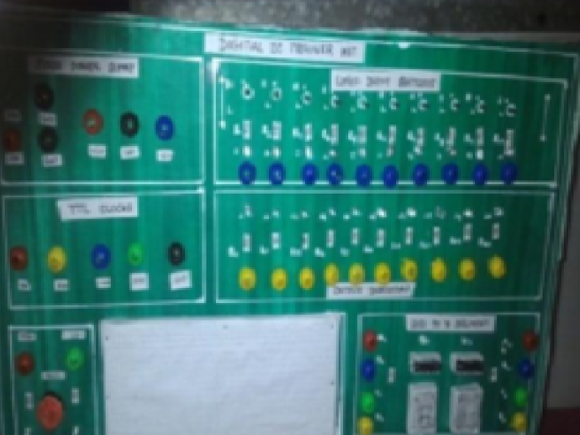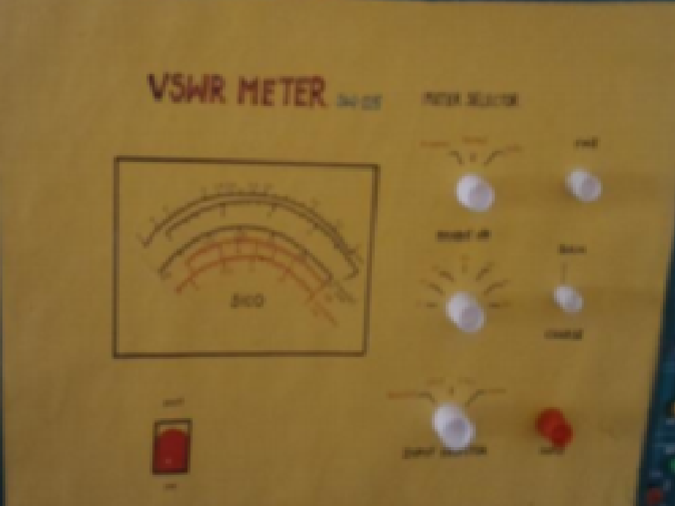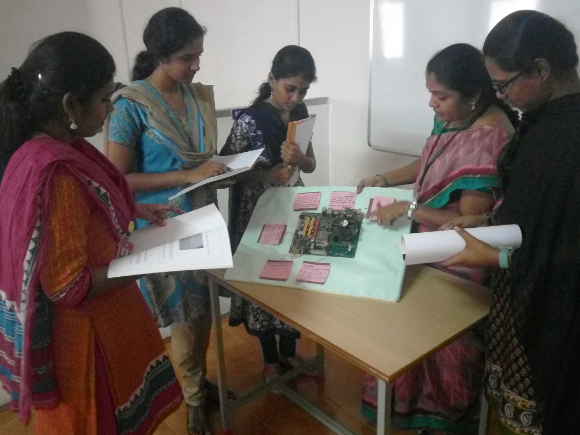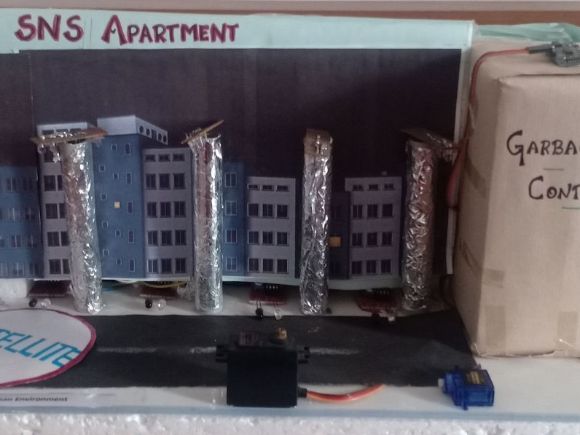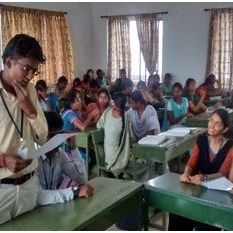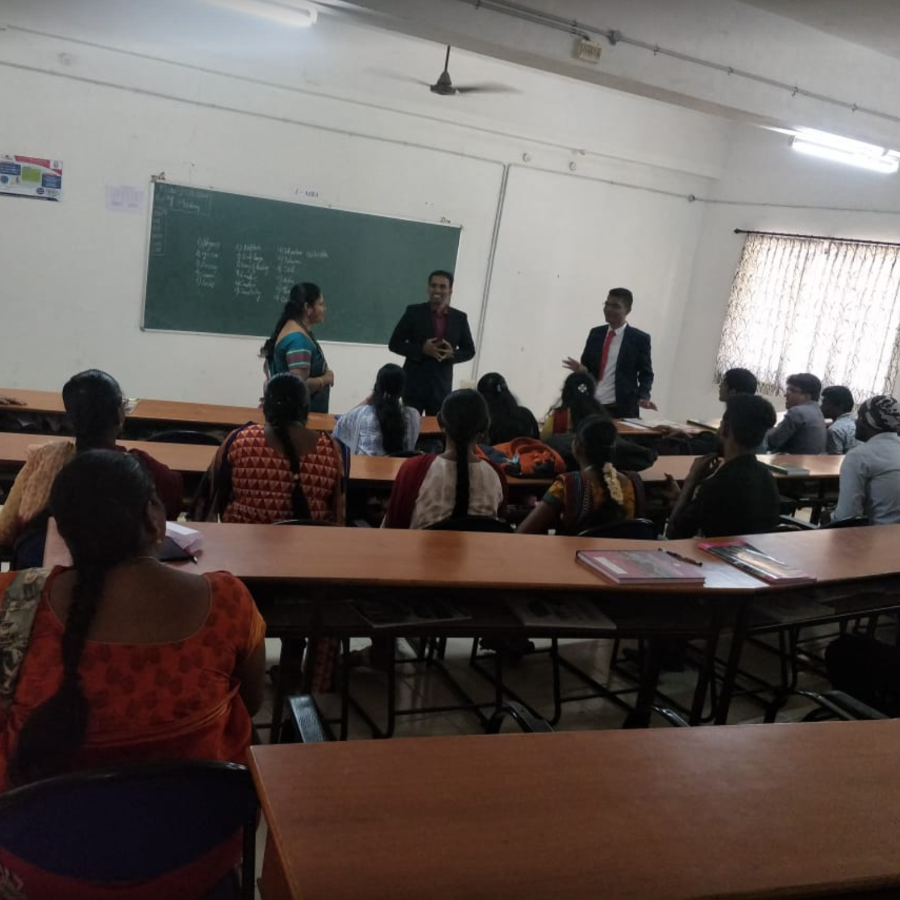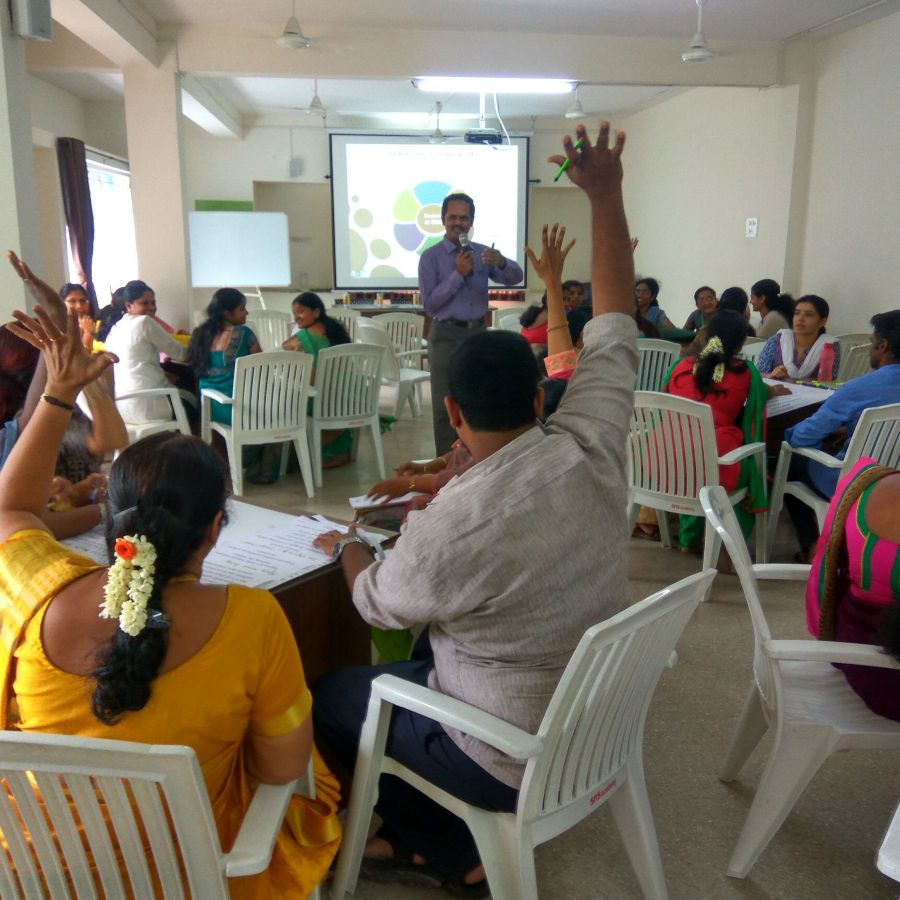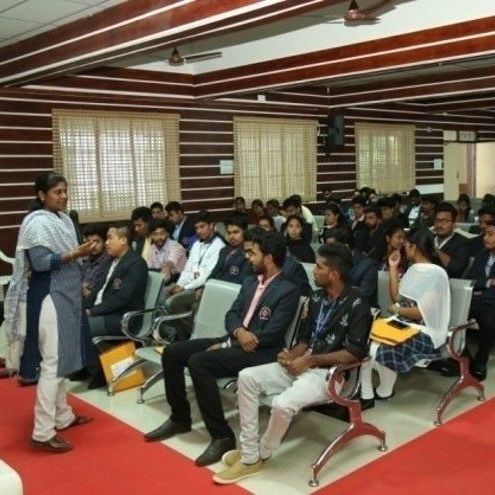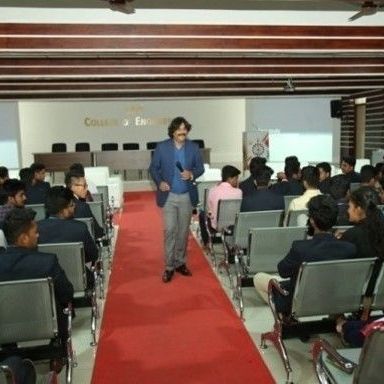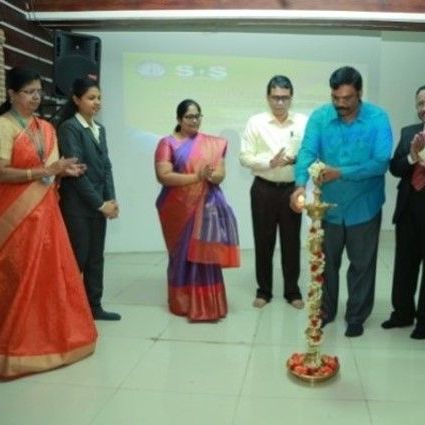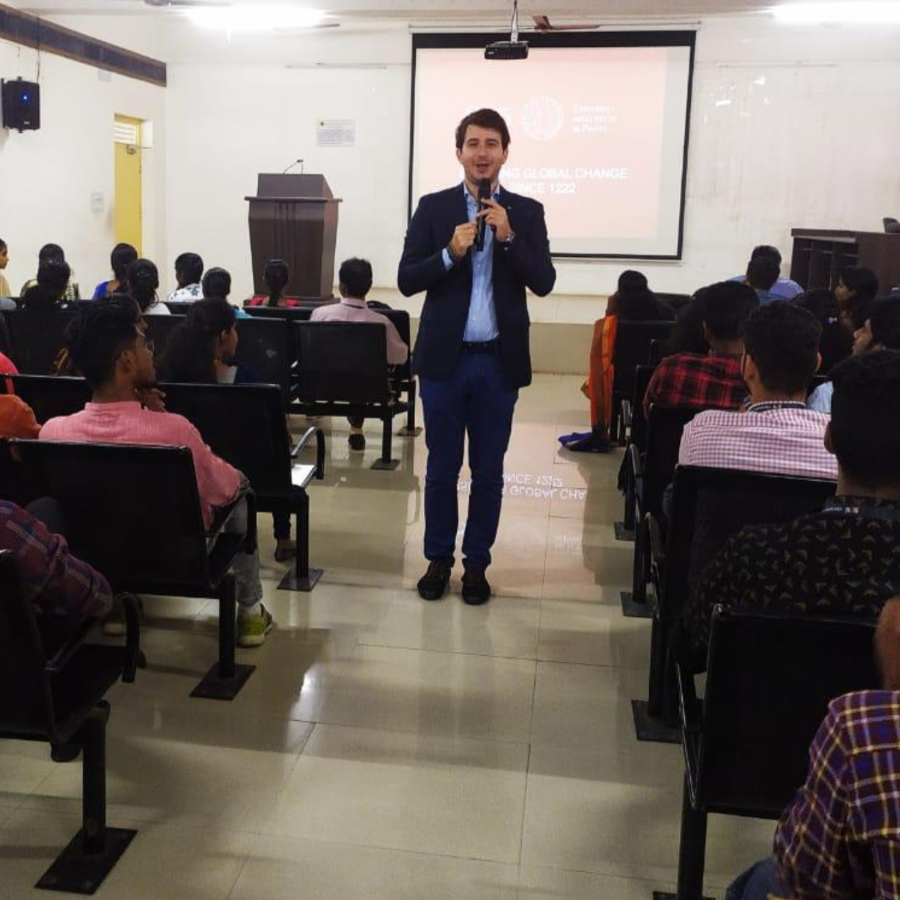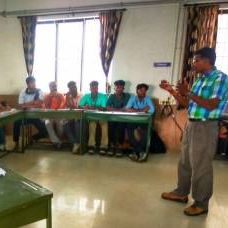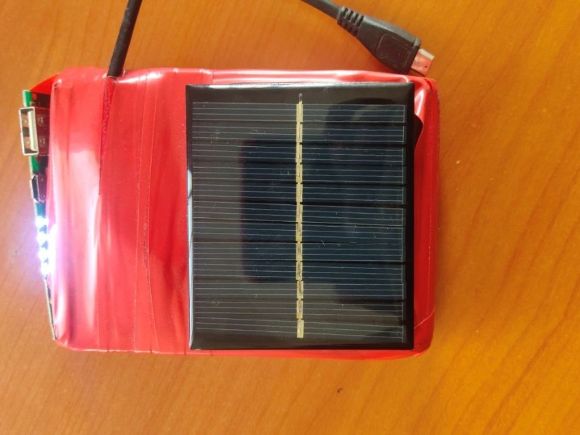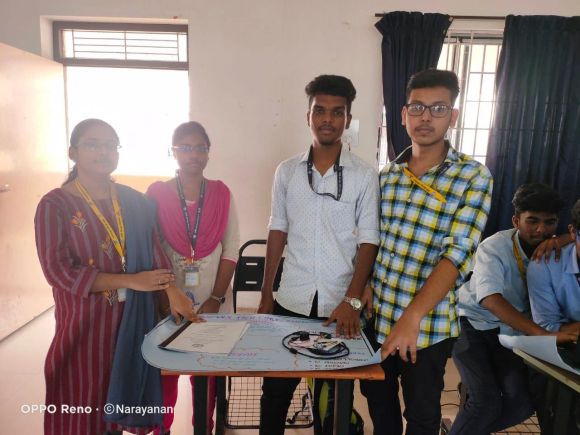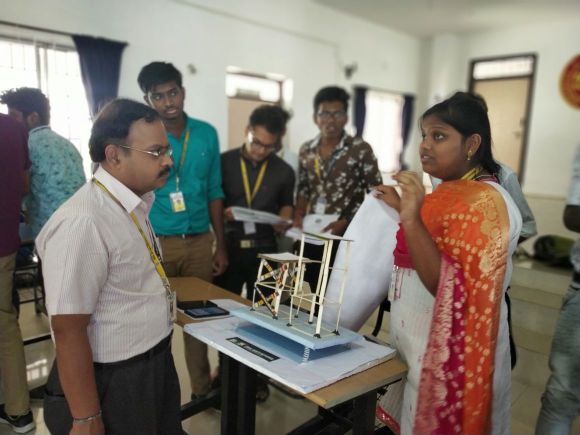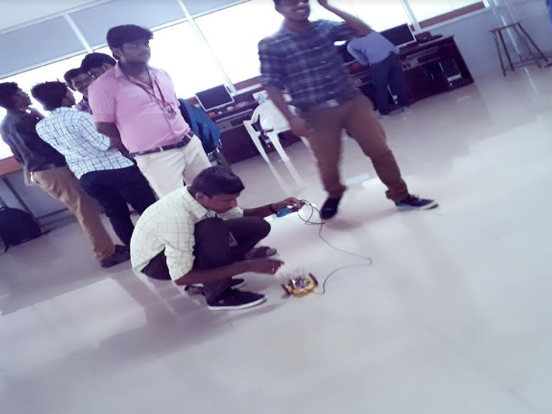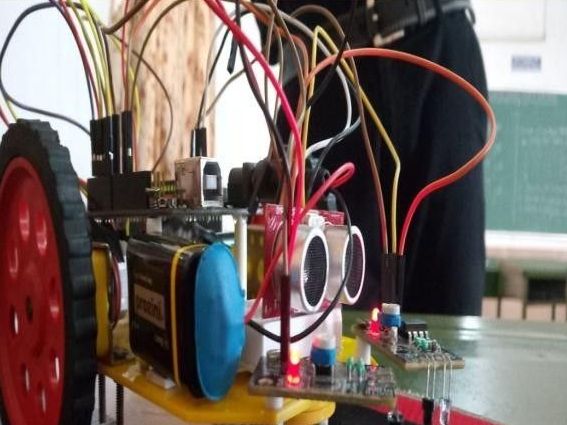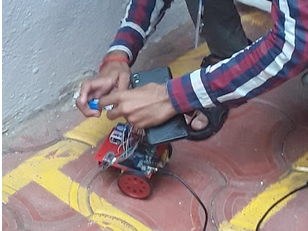 Counselling Code: 2734
Counselling Code: 2734

department of electronics and communication engineering
student development ACTIVitiES
Various number of student development activities are constantly being practiced in each classrooms, enforced by our Center of Learning and Teaching.
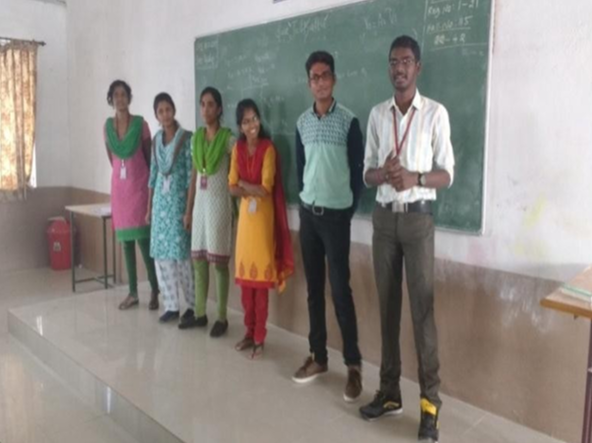
B++ Corner: Practiced everyday which includes Quiz and puzzle solving questions and Thought for the Day.

Chart work: Chart works relevant to the subject are submitted by students to improve their understanding level.

Game Activity: Game activity relevant to the subject is conducted for students for 5 mins to refresh them.
Game Activity: Game activity relevant to the subject is conducted for students for 5 mins to refresh them.
Group Discussion & Debate: Group discussion and debate are conducted during lecture class for better understanding of the students.
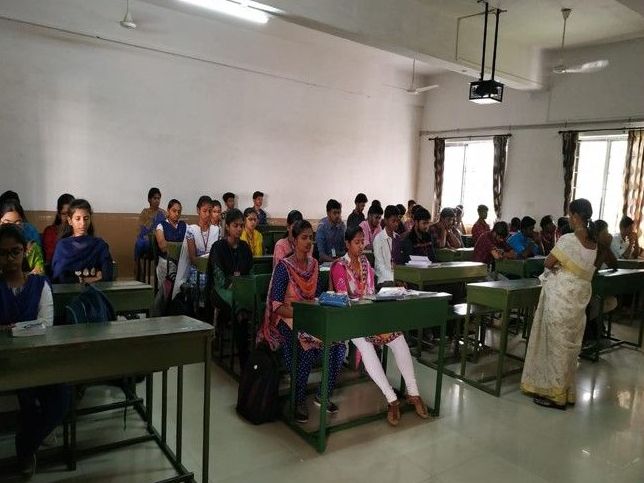
Peer group Learning: Students are grouped in a mixed ratio of bright, weak and average.

Meditation: To improve students concentration in studies, meditation is practiced from 8.45 to 9.15 am .
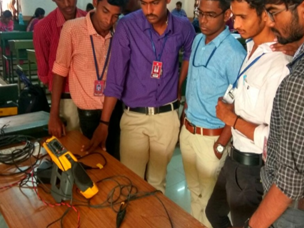
Mini-projects: Students do Mini-projects to implement their ideas and to develop practical skill.
Recap & summarize: During every lecture class,the students are asked to recap the previous class topic. At the end of every lecture class , students will summarize the topic discussed.
Role play: A practice through Active learning exercises such as Role play.

Physical exercise: Students do physical exercise to basket ball or Tennis court for physical relaxation.
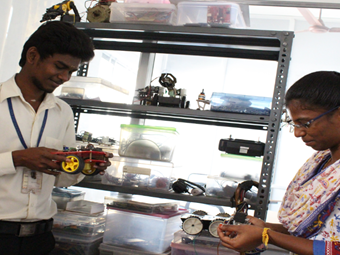
Project Based Learning: Electric bank is maintained in the department so that students can utilize the electronic bank to do mini projects.

Seminar: A practice through Active learning exercises such as seminar handled by students
classroom
demo models
industrial
case study
Naturally, students are more inductive than deductive, they learn better from examples than from logic. So, we believe the use of case studies is a very effective classroom technique. Students will be provided with an industrial case study linked with the concept or subject, where the students got to explore how their learning are applied in the real world situations. This helps the students to actively engage in figuring out the principles from the examples.
The 5G vision defines an advanced mobile broadband communication system that can support an ultra-connected society. The ITU worked with operators, network equipment manufacturers, and standards organizations to define the IMT-2020 vision to deliver these three usage scenarios:• Enhanced Mobile Broadband (eMBB)• Ultra-Reliable and Low Latency Communications (URLLC)• Massive Machine-Type Communications (mMTC)New applications and new business models will generate new revenue streams as market leaders move quickly to introduce new 5G products and services. Vastly different performance requirements are needed to enable the different use cases and realize the vision of 5G.New features and technologies will be key to 5G implementation:· Millimeter-wave (mmWave) operating bands up to 52.6 GHz with wider channel bandwidths up to 400 MHz enable higher data throughput for streaming of UHD videos and movies.· Scalable numerology enables support for a variety of use cases where data rates could range from kilobits/sec (kbps) for IoT devices to gigabits/sec (Gbps) for enhanced mobile broadband.· Mini-slots enable low latency response time for applications like autonomous driving and factory automation.· Flexible assignment of resources through dynamic TDD (time division duplex), and bandwidth parts offer better use of spectrum to support the many different use cases.
5G is moving fast. Accelerating 5G deployments globally are having a ripple effect throughout the mobile ecosystem. 5G also represents an exponential increase in technical complexity. Key challenges come from 5G new radio (NR), massive multiple input multiple output (MIMO), millimeter-wave (mmWave) frequencies, and over-the-air (OTA) test methods. 5G offers a dramatic improvement over 4G capabilities. Specifications aim to achieve data rates 100 times faster and provide less than 1 millisecond latency.Device engineers need to:• Design to the new standards• Validate protocols for numerous and widely different use cases• Verify RF performance to deliver the expected quality of service (QoS)Leverage the following five strategies to develop more robust devices faster:1. Reduce Prototype and Rework Costs with Simulation2. Adopt Versatile Tools to Support Numerous Use Cases3. Characterize Signal Quality with IQ Constellation and Numeric EVM Measurement4. Evaluate Device Performance with Real-World Impairments5. Reduce Distance and Path Loss in OTA Test Setups with IFF
4G made mobile internet speeds up to 500 times faster than 3G and allowed support for HD TV on mobile, high–quality video calls, and fast mobile browsing. The development of 4G was a massive feat for mobile technology, especially for the evolution of smart phones and tablets. 4G is now common throughout the world, but things are about to change again. The Internet of Things is now a real possibility and 4G will not be able to manage the huge number of connections that will be on the network.5G is widely believed to be smarter, faster and more efficient than 4G. It promises mobile data speeds that far outstrip the fastest home broadband network currently available to consumers. With speeds of up to 100 gigabits per second, 5G is set to be as much as 100 times faster than 4G.Low latency is a key differentiator between 4G and 5G.
The pepsi-co product sale was very much reduced. To improve the sales they decided to follow DT process. By doing that they have find a solution and improved their sales in market
MRI scanner was introduced by Doug. But it was very difficult to make children to keep calm during scan. They introduced DT process and changed the structure of the scanner
Patients felt difficulty in the hospital when they are waiting in the queue. The waiting time was spent usefully using the DT process
It is very difficult for the doctors to test the children eyes. SO they introduced DT process and make the students very happily while coming for eye checkup
Restaurants business was very dull due to some reasons like traffic, long queue, distance etc. To make people comfortable UberEATS introduced door delivery of food for the people from their favourite restaurants. They did this using DT process and they succeeded in it.
It is very difficult to carry mobile phone charger everywhere. Using microwaves , mobile phones are charged and the charging time depends on the call duration. If a user attends a call, his mobile starts charging and gets charged until user stops the call. A microwave transmitter is used to transmit the microwaves generated by microwave generator such as Magnetron using slotted waveguide antenna. Receiver section includes a sensor and Rectenna. Sensor detects incoming call and turns ON Rectenna. AC microwave power is converted into DC power and mobile starts charging. NOKIA launched this wireless charging technology in NOKIA LUMIA 1020 model but it was not successful because of the following reasons: 1)it was costlier 2)wireless energy transmission was hazardous to human body 3)charging was interrupted due to poor network traffic.
The Mobile industry has changed a lot. It is like a new smartphone coming out every other day.Most of the problems with gaming phones are similar to that of every other normal phone in the market.When a consumer buys a gaming smartphone it is a fact that the person is going to use it for gaming as well as daily purpose.So, ASUS decided to design a next-generation gaming phones rog 3 phone with support many features includes · Higher battery capacity.· Fast charging. Better cooling methods, Higher refresh rates, Better camera and audio quality.
Fiber optic technology is expected to play a major part in this growth. A Research and Markets study determined that the compound annual growth rate for the fiber optic market could reach 8.5 percent by 2025, meaning more industries will be looking to the solutions presented by this technology.A fiber optic cable is a network cable that contains strands of glass fibers inside an insulated casing. They're designed for long-distance, high-performance data networking, and telecommunications. Compared to wired cables, fiber optic cables provide higher bandwidth and transmit data over longer distances
A branch of physics that studies electromagnetic radiation (for example, light and infrared radiation), its interactions with matter, and instruments used to gather information due to these interactions. Optics includes the study of sight.Fiber optic and photonic devices are also being exploited as sensing devices for patient monitoring during medical imaging and treatment using radiation devices such as MRI, CT, and PET type scan systems that involve the use of high-intensity electromagnetic fields, radiofrequencies, or microwave signals.
The failures result when a parasitic transistor turns on and allows high current to be drawn from drain to source when the FET is off. ... One is when the FET transitions on in the forward direction with the body diode conducting, during which the FET will have limited dV/dt capability.The cause of this failure is a very high voltage, very fast transient spike (positive or negative). If such a spike gets onto the drain of a MOSFET, it gets coupled through the MOSFETs internal capacitance to the gate.Failures can be caused by excess temperature, excess current or voltage, ionizing radiation, mechanical shock, stress or impact, and many other causes. In semiconductor devices, problems in the device package may cause failures due to contamination, mechanical stress of the device, or open or short circuits
The strategic decision to implement line-transportation was found to increase movement repetitiveness for operators at manual assembly stations, even though workstations were constructed with consideration to ergo- nomics. Average shoulder elevation at these stations increased 30% and average shoulder moment increased 14%. It is concluded that strategic decisions made by designers and managers early in the production system design phase have con- siderable impact on ergonomic conditions in the resulting system. Automation of transport and assembly both lead to increased productivity, but only elements related to the automatic line system also increased mechanical loads on operators and hence increased the risk for work-related disorders. Suggestions for integrat- ing the consideration of ergonomics into production system design are made.
Photo-mechanics is an important experiment means to study the structural mechanics behaviour. At present, joint high-speed observation system has become an important method with multiple high-speed cameras, but unknown startup delays among cameras will decrease the system's accuracy. To address the problem caused by the asynchronization of multi-camera, a high-speed time measurement system is proposed to locate camera capturing time. Binary optical representation of time is adopted to design and implement the system. In order to reduce error in the system operating, three theorems are presented and proved to illustrate the essence of binary code. Based on that, an optimized algorithm is developed to transform optical representation to time information, and then the errors are evaluated mathematically. The experimental results show that the proposed system successfully locates time at microsecond level with a shutter time of 9.615 us and the optimized approach reduces the maximum error and standard deviation of error by 722 and 52 times respectively. The systematic method proposed in this paper contributes to practical applications efficiently and accurately.
Inter process communication (IPC) is a mechanism which allows processes to communicate with each other and synchronize their actions. The communication between these processes can be seen as a method of co-operation between them. Processes can communicate with each other through both: Shared Memory and Message passing.Methods in Inter process Communication,· Pipes (Same Process) – This allows flow of data in one direction only, · Names Pipes (Different Processes) – This is a pipe with a specific name it can be used in processes that don't have a shared common process origin, · Message Queuing,· Semaphores,· Shared memory,· Sockets, Inter process communication (IPC) is used for exchanging data between multiple threads in one or more processes or programs. ... It is a set of programming interface which allow a programmer to coordinate activities among various program processes which can run concurrently in an operating system.IPC allows one application to control another application, thereby enabling data sharing without interference. IPC enables data communication by allowing processes to use segments, semaphores, and other methods to share memory and information. IPC facilitates efficient message transfer between processes.One of the models of process communication is the message passing model.
An engine control unit (ECU), also commonly called an engine control module (ECM), is a type of electronic control unit that controls a series of actuators on an internal combustion engine to ensure optimal engine performance. ... The fuel injection system has the major role of controlling the engine's fuel supply. An electronic control unit (ECU) is any embedded system in automotive electronics that controls one or more of the electrical systems or subsystems in a vehicle. An Electronic Control Unit (ECU) is an embedded system that controls electrical subsystems in a transport vehicle. Modern motor vehicles have up to 80 ECUs.ECM - Engine control module (ECM) is basically a computer system that acts as the "brain" of a car. It analyzes lots of information to control the car performance. ECU - Engine control unit (ECU) controls a series of actuators on an internal combustion engine to ensure optimal engine performance. "Resetting the ECU" is the process of clearing all the longterm memory from the ECU's memory. These variables trim idle speed, fuel, spark, and more. ... By resetting the ECU, the trim values will be set to some neutral default value and all of the trouble codes will be cleared.ECM - Engine control module (ECM) is basically a computer system that acts as the "brain" of a car. It analyzes lots of information to control the car performance. ECU - Engine control unit (ECU) controls a series of actuators on an internal combustion engine to ensure optimal engine performance. "Resetting the ECU" is the process of clearing all the longterm memory from the ECU's memory. These variables trim idle speed, fuel, spark, and more. ... By resetting the ECU, the trim values will be set to some neutral default value and all of the trouble codes will be cleared.However, if the ECU is unplugged, it will retain any charge it may have even if you create a power draw someplace else in the vehicle. So you'd need to wait a decent amount of time to be "sure" it's drained. Some folks go so far as to unplug the battery and let the car sit overnight. The ECM 1 is one such computer; it has a fuse is installed to protect the computer from sudden power surges or other component damage -- the fuse will blow before any damage can reach the ECM.
